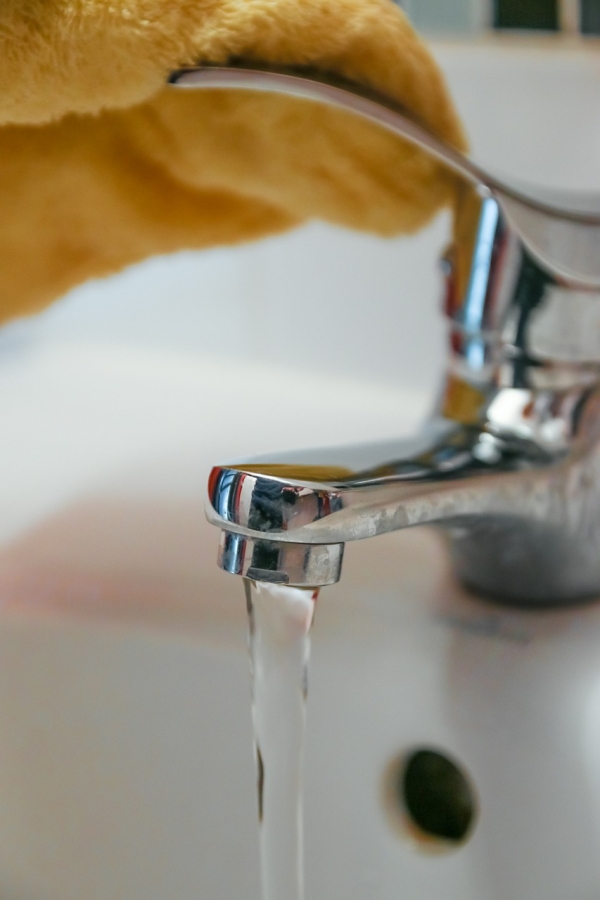How To Clean Your RV Living Area of Coronavirus Pathogens Featured
Written by MattWith coronavirus pathogens still present across America, keeping the living area of your RV disinfected becomes more important than ever.
Many of the cleaning agents you’ve been using in your RV living area are effective against coronavirus pathogens, but others may not be. If you decide to use cleaning products aimed at coronavirus pathogens but unfamiliar to you, it’s important to use products properly so they don’t harm fixtures, furniture and electronics.
The federal Centers for Disease Control lists cleaning agents that will kill coronavirus. You’ll have to look for numbers on each cleaning product label to see which qualify as CDC-approved disinfectants. You’ll also have to read the labels of individual products carefully to make sure they are compatible with the varying materials in your RV.
RV living spaces contain materials that are different from those in a motorhome cockpit or tow vehicle interior. For products to safely disinfect vehicle interiors, see our companion piece.
Match Materials, Cleaners
The living area of your RV contains pretty much the same materials as in a sticks-and-bricks home, so you can usually use the same cleaning agents that you would use at home. You just have to make sure they don’t just clean but also kill coronavirus pathogens. Cleaning can remove some virus pathogens but doesn’t kill them.
Some agents are hard on certain surfaces, so read the labels carefully. Certain foaming bathroom cleaners, for example, can destroy acrylic surfaces. Call your RV manufacturer’s customer service line for advice on what makes up the surfaces in your camper and what can clean them safely. The number is in your owner’s manual, or you can search for it online. Have your RV serial and model numbers available, since manufacturers do change some materials from year to year.
What To Use
In the living area, disinfect surfaces that you routinely touch: countertops, handles, knobs, cooking surfaces, switches, bathroom and toilet surfaces, plumbing fixtures and dinettes. You’ll also want to clean electronics, including computers, keypads, your cell phone and remote controls, all of which require special care.
In general, to disinfect living-area surfaces, it’s best wear disposable gloves. Even if youi do, wash your hands for 20 seconds with soap and water after cleaning.
Do Use
- Bleach. Use only on colorfast, non-porous surfaces, such as countertops, sinks and ceramic tile floors. In a bottle, mix 4 teaspoons of bleach with a quart of water. Wipe it on and let it work for four to five minutes, then rinse with clear water and wipe dry to avoid damage. Add a cup of bleach to a gallon of hot water for nonporous floors. WARNING: Mix bleach with water only. Combining it with other chemicals or cleaners could generate poisonous fumes or even explosions.
- Hydrogen peroxide. Use the standard household 3 percent solution—that’s the way you buy it— on nonporous surfaces. It’s especially good on metal, such as handles and drawer pulls. Let it stand for about 10 minutes. It actually does not have to be wiped off because it evaporates, according to Consumer Reports. Do not get it on fabrics, which it will stain permanently. Never mix it with other cleaners or chemicals.
- Isopropyl alcohol. It is safe for most surfaces and must contain at least 70 percent alcohol to be effective. Many disinfectant wipes contain alcohol. It must remain on the surface at least 30 seconds before being wiped off.
- Disinfectant cleaners and sprays. Use on hard surfaces only, wiping on and allowing to stand 30 seconds before rinsing off and wiping dry. See special instructions from Good Housekeeping on how to use disinfectant spray on a paper towel to clean phones. Clean remote controls, computers and keyboards the same way.
- Soap and water. This would include detergent, which is even more effective. Soap will clean off grease and surface dirt, making it tougher for pathogens to take hold. Scrub vigorously for soap to be effective, using a cloth or paper towel, plastic abrasive scrubber, or a sponge you’re willing to throw away. The soap breaks down the fatty outer surface of the coronavirus pathogen, rendering it harmless. Let stand for four minutes, then rinse with clean water and wipe dry. Use mild soap and water on leather or cloth upholstery.
- Disinfectant mop pads. Use one of these on hardwood floors, which would discolor with bleach.
Do Not Use
- White vinegar. It will not destroy coronavirus pathogens. It can, however, clean the surface of dirt where pathogens can lodge, including on hardwood floors. Let it dry and finish with a disinfectant.
- Simple Green All-Purpose Cleaner. Only industrial-targeted Simple Green Disinfectant will kill coronavirus pathogens. Regular Simple Green All-Purpose Cleaner is versatile and will clean surface dirt and grease, so it’s a good way to start on hard surfaces to rid them of the dirty layer where coronavirus pathogens often lodge. But then you must rinse, dry and follow up with a disinfectant.
- Vodka. It’s not sufficiently strong to destroy coronavirus pathogens. Save it for a martini; don’t use it to clean.
Other Hygiene Tips
The CDC has a page of tips for keeping your home, and therefor, an RV, safe. It includes tips for maintaining a safe home when someone living there has Covid-19.
After cleaning and disposing of gloves, always wash your hands with soap and water for 20 seconds. Washing hands frequently and keeping them away from your face is recommended.
The CDC suggests using plastic covers for electronics if they are available.
If you use cloth towels to apply or wipe down disinfectants, wash them with your laundry. Use the hottest water setting appropriate for the load.
